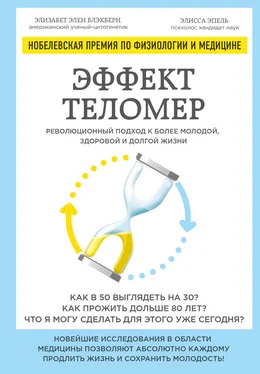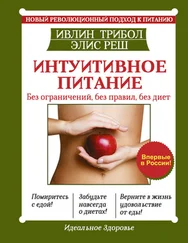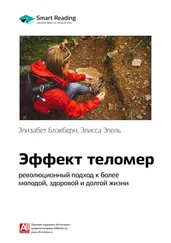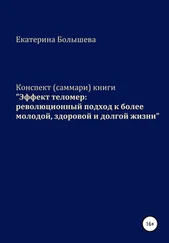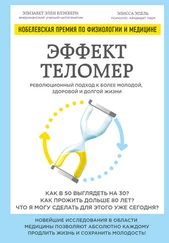12. Fothergill, Erin, Juen Guo, Lilian Howard, Jennifer C. Kerns, Nicolas D. Knuth, Robert Brychta, Kong Y. Chen, et al. “Persistent Metabolic Adaptation Six Years after The Biggest Loser Competition.” Obesity (Silver Spring, Md.), May 2, 2016. doi:10.1002/oby.21538.
13. Kim, S., et al., “Obesity and Weight Gain in Adulthood and Telomere Length,” Cancer Epidemiology, Biomarkers & Prevention 18, no. 3 (March 2009): 816–820, doi:10.1158/1055–9965.EPI-08–0935.
14. Cottone, P., et al., “CRF System Recruitment Mediates Dark Side of Compulsive Eating,” Proceedings of the National Academy of Sciences of the United States of America 106, no. 47 (November 2009): 20016–20020, doi:0.1073/pnas.0908789106.
15. Tomiyama, A. J., et al., “Low Calorie Dieting Increases Cortisol,” Psychosomatic Medicine 72, no. 4 (May 2010): 357–364, doi:10.1097/ PSY.0b013e3181d9523c.
16. Kiefer, A., J. Lin, E. Blackburn, and E. Epel, “Dietary Restraint and Telomere Length in Pre– and Post-Menopausal Women,” Psychosomatic Medicine 70, no. 8 (October 2008): 845–849, doi:10.1097/PSY.0b013 e318187d05e.
17. Hu, F. B., “Resolved: There Is Sufficient Scientific Evidence That Decreasing Sugar-Sweetened Beverage Consumption Will Reduce the Prevalence of Obesity and Obesity-Related Diseases,” Obesity Reviews 14, no. 8 (August 2013): 606–619, doi:10.1111/obr.12040; and Yang, Q., et al., “Added Sugar Intake and Cardiovascular Diseases Mortality Among U.S. Adults,” JAMA Internal Medicine 174, no. 4 (April 2014): 516–524, doi:10.1001/jamainternmed.2013.13563.
18. Schulte, E. M., N. M. Avena, and A. N. Gearhardt, “Which Foods May Be Addictive? The Roles of Processing, Fat Content, and Glycemic Load,” PLOS ONE 10, no. 2 (February 18, 2015): e0117959, doi:10.1371/ journal.pone.0117959.
19. Lustig, R. H. et al., “Isocaloric Fructose Restriction and Metabolic Improvement in Children with Obesity and Metabolic Syndrome,” Obesity 2 (February 24, 2016): 453–60. doi:10.1002/oby.21371. Epub Oct 26, 2015.
20. Incollingo Belsky, A. C., E. S. Epel, and A. J. Tomiyama, “Clues to Maintaining Calorie Restriction? Psychosocial Profiles of Successful Long-Term Restrictors,” Appetite 79 (August 2014): 106–112, doi:10.1016/ j.appet.2014.04.006.
21. Wang, C., et al., “Adult-Onset, Short-Term Dietary Restriction Reduces Cell Senescence in Mice,” Aging 2, no. 9 (September 2010): 555–566.
22. Daubenmier, J., et al., “Changes in Stress, Eating, and Metabolic Factors Are Related to Changes in Telomerase Activity in a Randomized Mindfulness Intervention Pilot Study,” Psychoneuroendocrinology 37, no. 7 (July 2012): 917–928, doi:10.1016/j.psyneuen.2011.10.008.
23. Mason, A. E., et al., “Effects of a Mindfulness-Based Intervention on Mindful Eating, Sweets Consumption, and Fasting Glucose Levels in Obese Adults: Data from the SHINE Randomized Controlled Trial,” Journal of Behavioral Medicine 39, no. 2 (April 2016): 201–213, doi:10.1007/s10865–015–9692–8.
24. Kristeller, J., with A. Bowman, The Joy of Half a Cookie: Using Mindfulness to Lose Weight and End the Struggle with Food (New York: Perigee, 2015). Also see www.mindfuleatingtraining.com and www.mb-eat.com.
Глава 10. Еда и теломеры: как питаться, чтобы клетки были здоровыми
1. Jurk, D., et al., “Chronic Inflammation Induces Telomere Dysfunction and Accelerates Ageing in Mice,” Nature Communications 2 (June 24, 2104): 4172, doi:10.1038/ncomms5172.
2. “What You Eat Can Fuel or Cool Inflammation, A Key Driver of Heart Disease, Diabetes, and Other Chronic Conditions,” Harvard Medical School, Harvard Health Publications, http://www.health.harvard.edu/family_health_guide/what-you-eat-can-fuel-or-cool-inflammation-a-key-driver-of-heart-disease-diabetes-and-other-chronic-conditions, accessed November 27, 2015.
3. Weischer, M., S. E. Bojesen, and B. G. Nordestgaard, “Telomere Shortening Unrelated to Smoking, Body Weight, Physical Activity, and Alcohol Intake: 4,576 General Population Individuals with Repeat Measurements 10 Years Apart,” PLOS Genetics 10, no. 3 (March 13, 2014): e1004191, doi:10.1371/journal.pgen.1004191; and Pavanello, S., et al., “Shortened Telomeres in Individuals with Abuse in Alcohol Consumption,” International Journal of Cancer 129, no. 4 (August 15, 2011): 983–992. doi:10.1002/ijc.25999.
4. Cassidy, A., et al., “Higher Dietary Anthocyanin and Flavonol Intakes Are Associated with Anti-inflammatory Effects in a Population of U.S. Adults,” American Journal of Clinical Nutrition 102, no. 1 (July 2015): 172–181, doi:10.3945/ajcn.115.108555.
5. Farzaneh-Far, R., et al., “Association of Marine Omega–3 Fatty Acid Levels with Telomeric Aging in Patients with Coronary Heart Disease,” JAMA 303, no. 3 (January 20, 2010): 250–257, doi:10.1001/jama.2009.2008.
6. Goglin, S., et al., “Leukocyte Telomere Shortening and Mortality in Patients with Stable Coronary Heart Disease from the Heart and Soul Study,” 2016, in press, PLOS ONE .
7. Farzaneh-Far et al., “Association of Marine Omega–3 Fatty Acid Levels with Telomeric Aging in Patients with Coronary Heart Disease.” (See #5 above.)
8. Kiecolt-Glaser, J. K., et. al., “Omega–3 Fatty Acids, Oxidative Stress, and Leukocyte Telomere Length: A Randomized Controlled Trial,” Brain, Behavior, and Immunity 28 (February 2013): 16–24, doi:10.1016/j. bbi.2012.09.004.
9. Glei, D. A., et al., “Shorter Ends, Faster End? Leukocyte Telomere Length and Mortality Among Older Taiwanese,” Journals of Gerontology, Series A: Biological Sciences and Medical Sciences 70, no. 12 (December 2015): 1490–1498, doi:10.1093/gerona/glu191.
10. Debreceni, B., and L. Debreceni, “The Role of Homocysteine-Lowering B – Vitamins in the Primary Prevention of Cardiovascular Disease,” Cardiovascular Therapeutics 32, no. 3 (June 2014): 130–138, doi:10.1111/1755–5922.12064.
11. Kawanishi, S., and S. Oikawa, “Mechanism of Telomere Shortening by Oxidative Stress,” Annals of the New York Academy of Sciences 1019 (June 2004): 278–284.
12. Haendeler, J., et al., “Hydrogen Peroxide Triggers Nuclear Export of Telomerase Reverse Transcriptase via Src Kinase Familiy-Dependent Phosphorylation of Tyrosine 707,” Molecular and Cellular Biology 23, no. 13 (July 2003): 4598–4610.
13. Adelfalk, C., et al., “Accelerated Telomere Shortening in Fanconi Anemia Fibroblasts – a Longitudinal Study,” FEBS Letters 506, no. 1 (September 28, 2001): 22–26.
14. Xu Q. et al., “Multivitamin Use and Telomere Length in Women,” American Journal of Clinical Nutrition 89 (6) (June 2009): 1857–63, doi:10.3945/ ajcn.2008.26986. epub Mar 11, 2009.
15. Paul, L., et al., “High Plasma Folate Is Negatively Associated with Leukocyte Telomere Length in Framingham Offspring Cohort,” European Journal of Nutrition 54, no. 2 (March 2015): 235–241, doi:10.1007/ s00394–014–0704–1.
16. Wojcicki, Janet et al “Early Exclusive Breastfeeding Is Associated with Longer Telomeres in Latino Preschool Children.” The American Journal of Clinical Nutrition , July 20, 2016. doi:10.3945/ajcn.115.115428.
17. Leung, C. W., et al., “Soda and Cell Aging: Associations Between Sugar-Sweetened Beverage Consumption and Leukocyte Telomere Length in Healthy Adults from the National Health and Nutrition Examination Surveys,” American Journal of Public Health , 104, no. 12 (December 2014): 2425–2431, doi:10.2105/AJPH.2014.302151.
Читать дальше
Конец ознакомительного отрывка
Купить книгу
